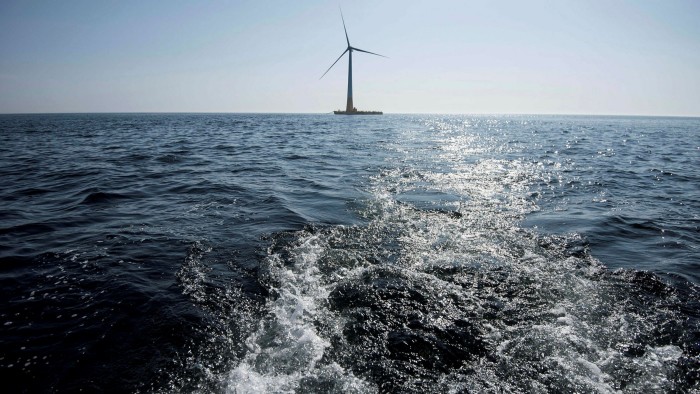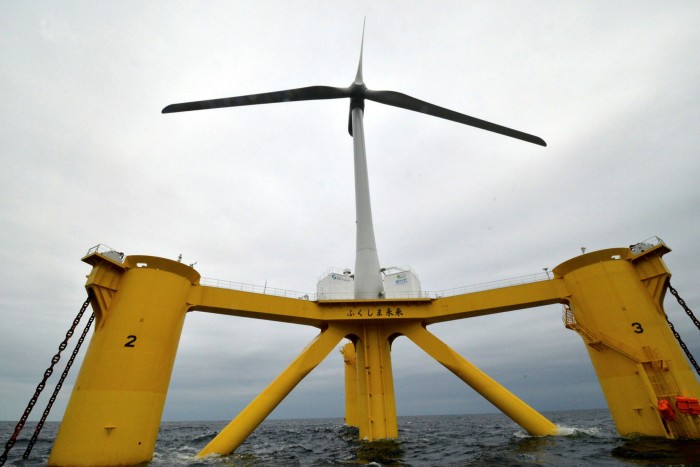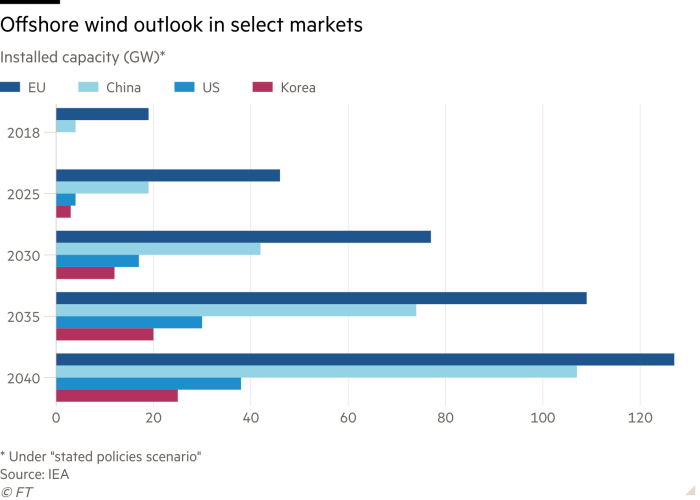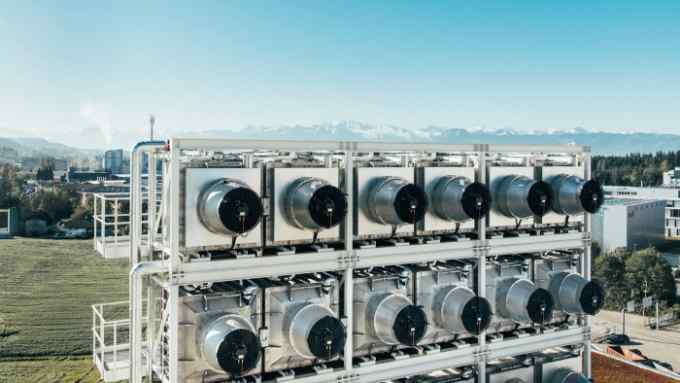Floating turbines buoyed by rising demand for clean energy

Simply sign up to the Renewable energy myFT Digest -- delivered directly to your inbox.
More than 80 miles off Norway’s east coast, in an area surrounded by five oil and gas platforms, Norwegian energy major Equinor is developing an offshore wind project that it hopes will break several records.
The 88MW Hywind Tampen scheme will overtake a project in Scotland to become the world’s biggest wind farm using floating turbines. Though relatively modest in size — by comparison, the world’s biggest “conventional” offshore wind project under development is 3.6 gigawatts — it will also be the first to provide renewable electricity directly to nearby oil and gas platforms when it is completed in 2022, according to the Norwegian group.
In the past decade, a number of companies have been testing floating technologies that they believe will open up vast sea areas that are unsuitable for conventional “fixed-bottom” wind turbines, which are anchored directly to the seafloor.
Waters in areas such as Japan, Taiwan and the west coast of America can be too deep, or the seabeds too soft, hard or uneven, for fixed-bottom turbines. Developers are keen to use floating turbines to access higher wind speeds further out to sea.

According to the Brussels-based research organisation ETIPWind, floating turbines could open up 80 per cent of the world's offshore wind resources located in waters deeper than 50 metres.
The sector is now “standing really at the verge of a huge leap”, according to Alexander Vandenberghe, research and innovation adviser at Brussels-based WindEurope, a global body for the industry. Countries including France and South Korea are eyeing floating wind as a way of decarbonising their power systems to curb their contributions to climate change.
Last month, Japan launched an auction for floating offshore wind projects and France has also signalled it will hold three tenders, starting next year, as it aims to encourage projects of 250MW — almost three times bigger than the Hywind Tampen scheme.
Pal Eitrheim, executive vice-president for new energy solutions at Equinor, says there has been a “significant change” in the way floating wind has been regarded “over the past year or so”.
Many experts previously believed large floating wind projects would be developed only after companies had exhausted seabeds suitable for fixed-bottom turbines. But there are now indications that “these things are going to be developed in parallel”, says Mr Eitrheim.
His confidence is based partly on the fact that, if certain countries want to pursue offshore wind, they will “have to go floating almost from day one simply because of the nature of their [continental] shelf”, Mr Eitrheim says, citing Japan, California and South Korea.

But the industry also believes floating wind technologies — which have so far been funded predominantly via generous government subsidies or grants — can experience similar dramatic price falls seen with fixed-bottom projects. Costs fell dramatically as turbines became taller and more powerful, and supply chains matured.
For example, in an auction last year for fixed-bottom projects in the UK — the world’s biggest offshore wind market — developers agreed to build schemes for guaranteed prices of electricity at about £40 per megawatt hour. This compares with some early UK offshore wind projects with prices as high as £150/MWh.
For the first of the French auctions for floating wind, authorities have specified a maximum price of €120/MWh.
Bruno Geschier, chief sales and marketing officer for Ideol, a French developer of floating foundations, believes floating wind projects will also benefit from the historic pattern of cost reductions already achieved in the wider industry of conventional turbines.
“A big part of the cost reduction we witnessed with fixed-bottom is immediately translatable and transmissible to floating wind, he says. “ We benefit from the lowering cost of wind turbines per megawatt . . . [the] experience of offshore contractors and electrical cable suppliers, and all of that.”
But he argues investors and suppliers of floating wind turbine arrays will need clear “visibility” over the scale of development that governments want to achieve in the future and certainty over the subsidy mechanisms on offer to operators. Such a framework could mirror the historic encouragement and subsidies that have contributed to the steady cost reductions achieved in the conventional offshore industry, he adds.
With the right encouragement, Mr Geschier argues the floating wind industry could hit “the €40-€60/MWh by 2030 that fixed-bottom is achieving”.
Pure cost is not the only hurdle to the greater deployment of floating wind, according to Mr Vandenberghe of WindEurope — so too is the task of proving the robustness of competing engineering concepts in the field.
He estimates there are currently about 50 different floating technology designs. These range from “spar buoys” — cylinders filled with water and ballast to keep a turbine upright — to floating foundations. Mr Vandenberghe believes these will filter down “by natural selection” to just a handful.
“If you want to install a 200MW floating wind farm we are talking about 20 floaters so how do you produce [them] in large volumes? Some concepts are maybe easier than others,” Mr Vandenberghe says.

Comments